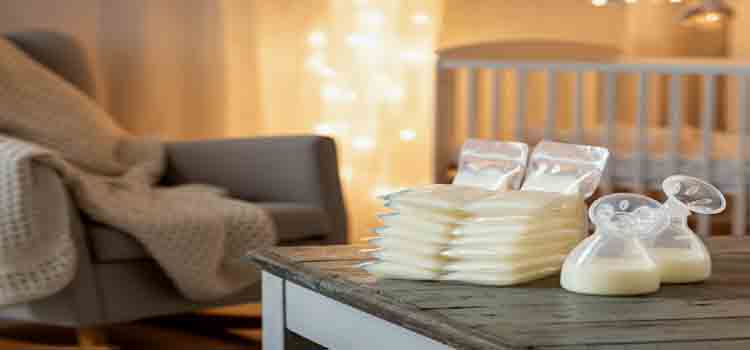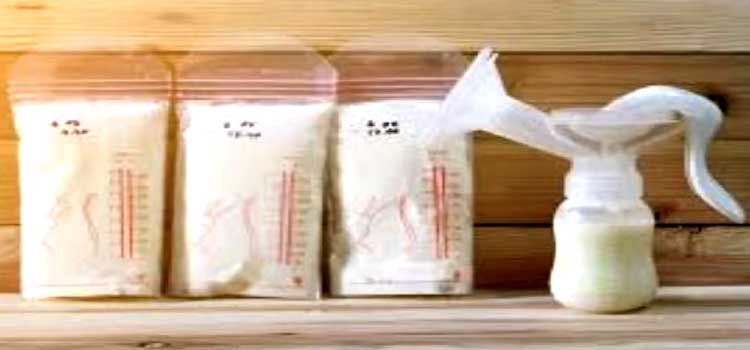As an Amazon Associate I earn from qualifying purchases.
If there’s one question you almost certainly will find yourself wondering when you start on your breastfeeding and pumping journey, it’s this: how many breast milk bags do I need? There is no one-size-fits-all answer to this question since the answer depends on factors like how much you pump, how much milk you make, and how long you want to store the milk for!
By knowing these things, you can figure out how many bags you need to have enough stock to have enough milk available when you need it. In this article, we will try our best to guide you in calculating how many storage bags to buy that match your actual needs.

Why Breast Milk Storage Bags Matter
On the other hand, breast milk storage bags are a hassle-free and safe way to freeze, refrigerate, and carry the expressed milk. They are specifically designed to store human milk and are often pre-sterilized, making it less likely you will contaminate the milk.
Now, why these bags are the must-need ones among nursing parents;
- Spill-proof and sealed: No spills, and freshness of milk is maintained.
- Space-saving: sticks can be laid flat in the freezer, saving valuable space.
- Easy Labeling: Write-on labels make it easy to note the date and amount.
- Ideal For Travel: As it is a one-time use travel factor of less than 1 gm.
But how do you decide how many to buy? It depends on how often you express milk, your feeding methods, and how you store milk.
Benefits of Using Breast Milk Storage Bags
Before you figure out the correct quantity, it helps to understand why these bags are a staple for so many parents:
- Space-saving design: Easier to store in a freezer or cooler than bottles.
- Pre-sterilized and hygienic: Most bags are ready to use right out of the box.
- Leak-proof seals: Prevent spills and keep milk safe.
- Easy labelling: Write dates and times directly on the bag for tracking.
- Portability: Lightweight and perfect for travel or childcare settings.
- Cost-effective (compared to buying extra bottles).
Factors That Influence How Many Breast Milk Bags You Need
Each person’s feeding and pumping schedule is different.” To gauge how many milk storage bags you’ll need, consider these questions:
How Often Do You Pump?
- If you pump one or two times a day, you’ll need fewer bags than if you’re pumping exclusively (producing all of your feeds with a pump).
- Seasonal pumpers (once or twice a week) will have even fewer bags (around 20–40 per month).
- Part-time pumpers (once or twice daily) may use 30–60 per month.
- Exclusive pumpers (every meal via pump) can be used 90 or more per month, depending on the baby’s age and milk intake.
Are You Freezing or Refrigerating Milk?
If you only store milk in the fridge for short-term use, you’ll reuse bottles and need fewer bags. If you freeze milk to build an emergency stash or prepare for returning to work, you’ll need more bags.
- Freezing daily? You’ll need one bag per session or per batch.
- Refrigerating only? Bags need to be decreased since you may use the same bottle or bag for feeding.
Do You Have Access to Washing Supplies?
If you’re frequently on the go, you may find it easier to use disposable, pre-sterilized bags rather than storing and washing bottles. That means you’ll go through more bags in less time.
Do You Create a “Freezer Stash”?
Parents going back to work or getting ready to travel might need a supply of 100 ounces (or more) of milk. Storing 4 ounces per bag and building a 100-ounce stash would take at least 25 bags to start.
How Often Do You Plan to Rotate Milk?
The American Academy of Pediatrics recommends using the oldest milk first. If you’re regularly pulling old bags out to thaw, calculate both your daily pumping and feeding rates to minimize overbuying.
How to Estimate How Many Milk Storage Bags You’ll Need

Assess Your Pumping Frequency
Your daily or weekly pumping schedule is the biggest factor in estimating your bag needs.
Occasional Pumpers
If you pump infrequently (once or twice a week) or only for the occasional night out, a small box (25–50 bags) will likely last you several months.
Regular Pumpers
Many working parents who pump at work typically express milk 2–3 times per day, five days a week. If that’s your routine, you’ll need:
- 10–15 bags per week for each workweek
- About 40–60 bags per month
Exclusive Pumpers
Parents exclusively expressing breast milk (8–10 sessions/day) will use even more. Plan to have:
- 50–100 bags per week
- 200–400 bags per month, depending on milk output and storage space
Think About Your Storage and Use Habits
Freezing vs. Refrigerating
- Freezing: If you freeze milk regularly, you’ll need more bags up front.
- Refrigerating: If you mostly store milk short-term in bottles in the fridge, you might need fewer bags.
The size of Each Feeding
Storage bags typically hold 4–6 ounces. Expressed milk is best frozen in smaller amounts (2–4 oz) to reduce waste. Consider how much your baby drinks per feeding to avoid thawing excess.
Returning to Work or Building a Stash
- For a return to work, many parents build a freezer stash of 2–4 weeks’ worth of milk. That’s often 40–100 bags, depending on your baby’s age and feeding patterns.
- If you want emergency extras, having spare bags (about 20–30) provides peace of mind.
Consider Milk Bag Cost and Safety
Some parents buy bags as needed; others stock up when there’s a sale. Reliable brands offer boxes from 25 up to 200-count. Only use bags labelled as safe for breast milk storage. Never substitute standard food storage bags for this purpose, as they aren’t intended to protect milk’s nutrients or prevent leakage.
Travel and On-the-Go Needs
If you’re on the move, keep a supply of bags in your pumping bag, glove compartment, or stroller. A multipack (50–100 bags) stashed in various locations prevents emergencies.
Recommended Guidelines for New Parents
Here’s a practical summary based on typical lifestyles:
| Feeding Style | Estimated Bags Needed |
| Occasional Pumper | 25–50 per 3–6 months |
| Part-time/Working | 40–60 per month |
| Exclusive Pumper | 200–400 per month |
These estimates can change if your baby’s feeding needs go up, or you have a big freezer stash goal.
How Long Can You Store Milk in Bags?
Refer to CDC guidelines for breast milk storage:
- Room Temperature (up to 4 hours)
- Refrigerator (up to 4 days)
- Freezer (up to 6 months, 12 months in a deep freezer)
Bags take up less space than bottles, letting you store more milk safely for longer.
How Many Should I Order to Start?
Aim for a starter box of 50–100 bags if:
- You plan to pump regularly for work or feeding
- You’re uncertain about your pumping routine and want to test the workflow
- You’d like to avoid buying bags multiple times per week
For exclusive pumpers, monthly bulk purchases or a subscription service keeps you stocked (and usually saves money).
Tips for Smart Breast Milk Storage
Labelling and Rotation
- Label every bag with the date, amount, and (optional) time of expression. Use the oldest first to minimize waste.
Freezer Organization
- Lay bags flat when freezing to save space.
- Store upright in bins or baskets to make it easier to pull the oldest first.
Portion Control
- Store milk in 2–4 oz servings for newborns.
- Use slightly larger bags as your baby grows and takes more per feeding.
Avoid Overbuying: Start with a moderate box (50–100 bags) and assess consumption for the first few weeks. You can always order more if needed.
What Brand and Type Should I Choose?
Look for:
- BPA-free materials
- Double-zipper seals to prevent leaks
- Pre-sterilized certification
- Clear measurement markings
- Bags that stand for easy filling
Popular options include Lansinoh, Medela, NUK, and Kiinde, but always check compatibility with your pump system.
The Bottom Line
There’s no exact science to finding the right breast milk storage bag quantity for your needs, but with some planning, you can successfully keep your milk stash organized, safe and ready to use when your baby needs it.
Consider buying a smaller pack to gauge your usage in your first weeks of pumping. Supply yourself with your routine as it becomes established. Remember that the right number will save you time, money and trouble in those precious (and busy) early parenting days.
FAQs
You may need at least 20-30 breast milk bags to ensure enough supply to store the milk you have pumped or collected.
The 4-4-4 rule is for milk: 4 hours at room temp, 4 days in the fridge, 4 months in the freezer.
Storage bags are handy for storing and freezing milk, but lidded containers can serve as substitutes.
Actually, breast milk storage bags shouldn’t be reused because of the risk of introducing pathogens, but some brands do allow one reuse.
Spoiled milk might smell sour, taste-off, or look curdled. Always look for changes in color.
Amazon and the Amazon logo are trademarks of Amazon.com, Inc, or its affiliates.
Leave a Reply